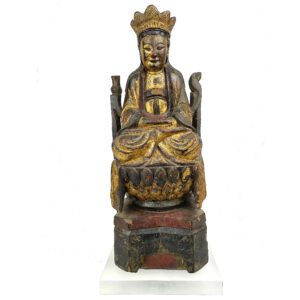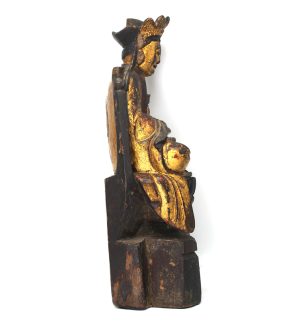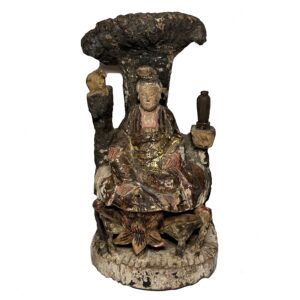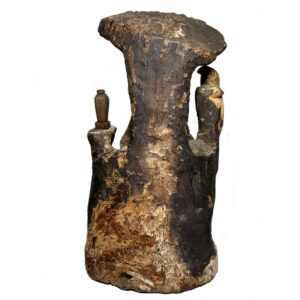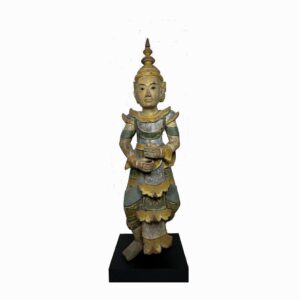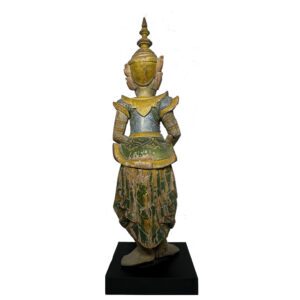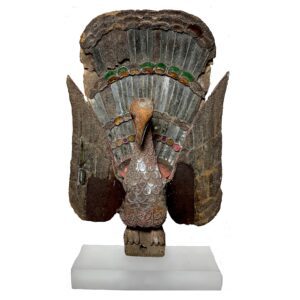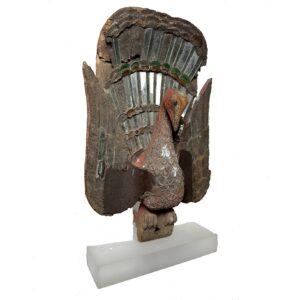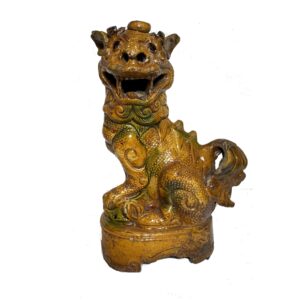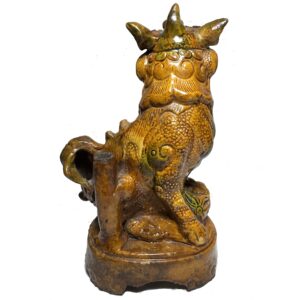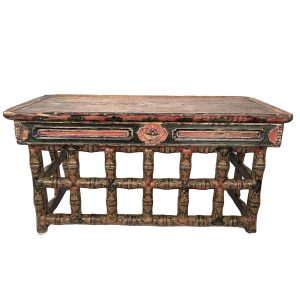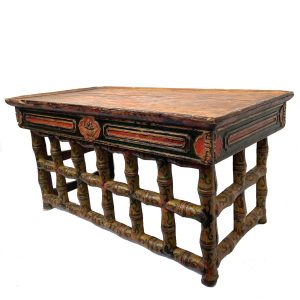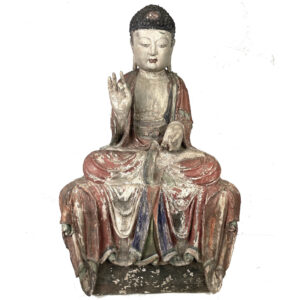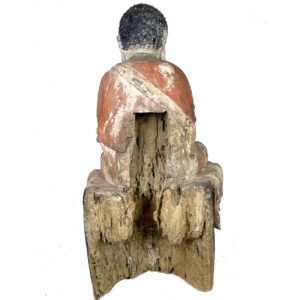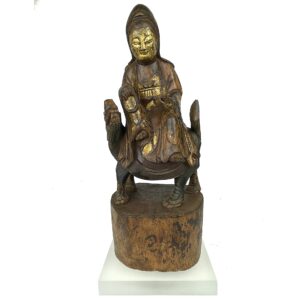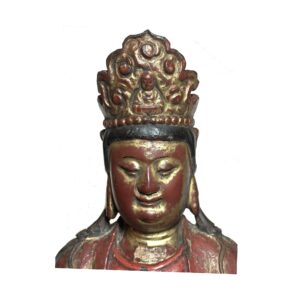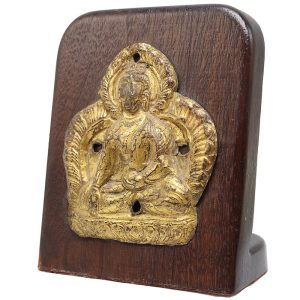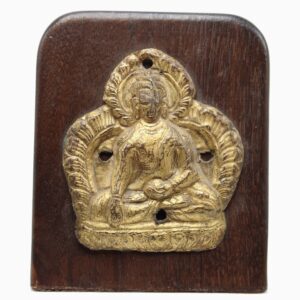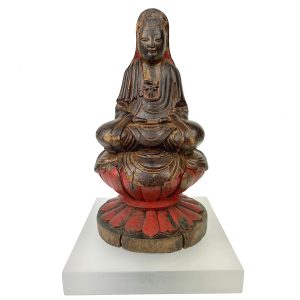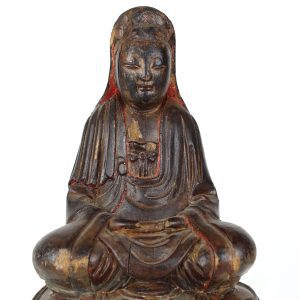Showing 37–48 of 98 results
-
Sale!


$1,450.00 Original price was: $1,450.00.$1,150.00Current price is: $1,150.00.
H: 15.5″ W: 6″ D: 5.25″ | CALL 213-568-3030 OR EMAIL VANISHINGARTS213@GMAIL/COM for shipping information
Elegant Guanyin in meditation, gilt covered with five-lobed crown. Sacred vial on her right and parrot on left. Guanyins statues with symbols in this condition are rare and impart a feeling of serenity to the environment around them.
-
Sale!


$595.00 Original price was: $595.00.$525.00Current price is: $525.00.
H: 9.75″ W: 5″ D: 4.5″ | FREE SHIPPING within continental u.s.
Nanhai Guanyin in her Cave in lalitsana, below draped moss arch holding a scrolls, next to vial of humanity’s tears and parrot, her constant companion. Small Nanhai images with these symbols are very rare.
-
Sale!


$650.00 Original price was: $650.00.$395.00Current price is: $395.00.
H: 7.75” W: 3.5″ D: 3.5″ | FREE SHIPPING within continental U.S.
Rare and charming carved attendant pair to flank deities on circular pedestals presenting boxed offerings with ribbons as wish for longevity.
-
Sale!


$1,200.00 Original price was: $1,200.00.$950.00Current price is: $950.00.
H: 25″ W: 8″ D: 6″ | CALL 213-568-3030 OR EMAIL [email protected] FOR SHIPPING.
Regional Rattanakosin carving of a Thai celestial guardian or attendant originally placed on a home or small temple for protection and devotion. Stylized layered garment, intricate detailing and headdress signify his celestial and royal status.
-
Sale!


$725.00 Original price was: $725.00.$595.00Current price is: $595.00.
H: 16.5” W: 9.5” | 2.875” : | CALL 213-568-3030 OR EMAIL [email protected] FOR SHIPPING.
Carved Mandalay style peacocks with outspread feathers like this were placed over entrances to protect religious and government buildings. The peacock was emblem of last Burmese Dynasty symbolizing the monarchy descending from the sun.
-
Sale!


$225.00 Original price was: $225.00.$195.00Current price is: $195.00.
H: 7″ W: 4.75″ D: 3″ | FREE SHIPPING WITHIN CONTINENTAL U.S.
Whimsical porcelain male Buddhistic fu lion with glossy, drip-glaze sancai amber/yellow and green glaze finish and stylized features.
-
Sale!


$750.00 Original price was: $750.00.$550.00Current price is: $550.00.
Ht: 13.75” W: 26.25” D: 13.125” | FOR SHIPPING INFORMATION CAL 213-568-3030 OR EMAIL [email protected]
One of a pair of Tibetan antique folding traveling prayer/study table for monks or nomadic families to lay out sutras (scriptures), scrolls, books, other study materials. Decorated with painted florals and fruit offering bowl symbolizing flowering of enlightenment and opening of the heart.
-
Sale!


$4,500.00 Original price was: $4,500.00.$3,300.00Current price is: $3,300.00.
H: 30″ W: 18″ D: 10″ | | CALL 213-568-3030 OR EMAIL [email protected] FOR SHIPPING.
Superb, colorful and rare Buddha in teaching (vitarka) mudra appears to float above swirling cloud. Fine features, graceful body and exquisitely rendered drapery make this a truly striking statue. Given its size and masterful carving, it should be revered commensurate with its spirituality and artistry.
-
Sale!


$725.00 Original price was: $725.00.$585.00Current price is: $585.00.
H: 15.125” W: 6” D: 5” | FREE SHIPPING within Continental U.S.
Rare provincial carving of Guanyin in lalitsana clasping a rosary on a mythical Hǒu that symbolizes righteousness, morality and ushers in peace and prosperity. Small yet powerful, consecrated and mounted on Acrylic base.
-
Sale!


$3,750.00 Original price was: $3,750.00.$2,900.00Current price is: $2,900.00.
H: 19″ W: 10″ D: 8″ | CALL 213-568-3030 OR EMAIL [email protected] for shipping INFORMATION.
Wonderfully carved Nanhai Guanyin with ornate and beautiful diadem centered by elaborately framed Buddha Amitabha in meditation. Vibrant aura radiates spirituality, opulence, serenity and strength, as well as compassion and grace, making this a truly masterful piece of art.
-
Sale!


$595.00 Original price was: $595.00.$495.00Current price is: $495.00.
with stand H: 5″ W: 4.6″ D: 4″ | FREE SHIPPING WITHIN CONTINENTAL U.S.
Tibetan repoussé of Shakyamuni Buddha in Earth Witnessing mudra within a trefoil arch on a lotus base.
-
Sale!


$495.00 Original price was: $495.00.$395.00Current price is: $395.00.
H: 8.675″ Dia: 4.5″ | Free SHIPPING WITHIN CONTINENTAL U.S.
Delicate white robed Guanyin in meditation on radiating lotus throne. Provincial humble, modest, relatable, yet beautiful matronly figure.
End of content
End of content

